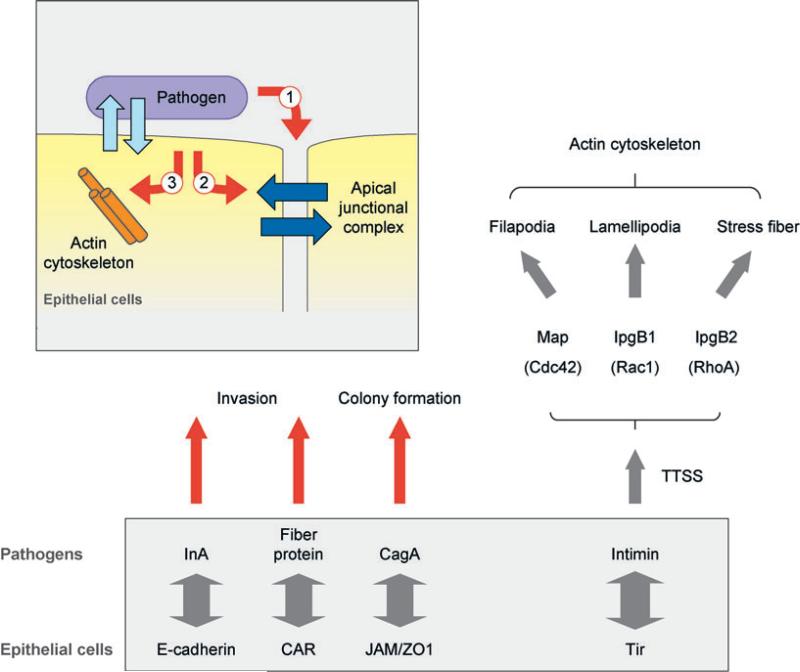Figure 6.
Schematic representations of novel synapses formed between pathogens and host cells. Pathogens form synapses on the luminal surface of epithelial cells (inset) and modify the host cell synapse from the outside (1) or inside (2), or through reorganization of the actin cytoskeleton (3). Pathogen surface proteins bind host cell adhesion proteins (left) or a pathogen protein inserted by a type III secretion system (TTSS) (right), and hijack host protein networks to modify the actin cytoskeleton and membrane dynamics. Abbreviations: CagA, cytotoxin-associated gene 1; CAR, Coxsackie virus and adenovirus receptor; InlA, internalin A; JAM, junction-associated molecule; Map, mitochondrial-associated protein; Tir, translocated intimin receptor; ZO1, zonula occludens-1.

